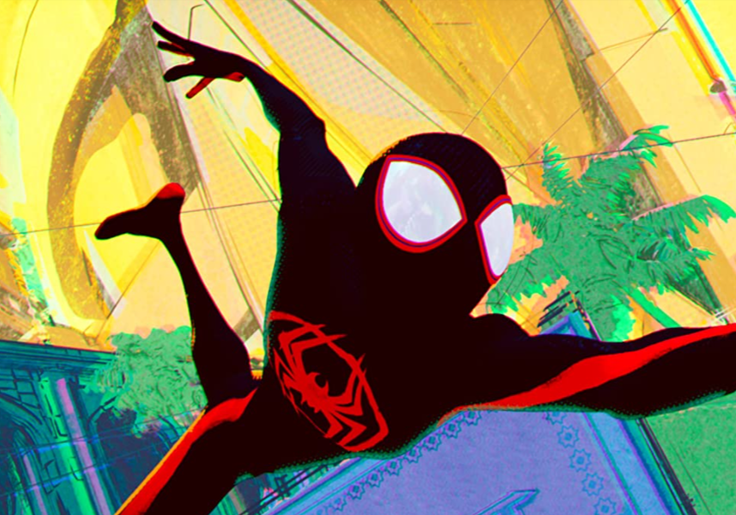In 2018, a cartoon called Spider-Man: Into the Spider-Verse won the Academy Award for best animated feature—and rarely has any Oscar been as deserved. It was, and is, dazzling. Multiple versions of the iconic Marvel character, derived from multiple iterations of the Marvel comic book, share the screen in this delightful and inventive coming-into-adolescence story—among them a Porky Pig-like Spider-Man, a black-and-white hard-bitten detective Spider-Man, a Japanese girl and her pet robot combined into a mechanical Spider-Man, and our protagonist, a 12-year-old kid named Miles who attends a charter school in Brooklyn. Aside from being fun, unexpected, and funny, Into the Spider-Verse is so exuberant in its enthusiastic evocation of the visceral experience of reading a comic book that it immediately set a new standard for eye-popping animation just as Pixar had two decades before it.
Now the guiding hands behind Into the Spider-Verse—Phil Lord and Chris Miller, who had previously made the hilarious movie version of 21 Jump Street and moved into animation with the delightful Lego Movie—have upped their ante. Spider-Man: Across the Spider-Verse is a conscious effort to be to its predecessor what The Empire Strikes Back was to the original Star Wars. It’s darker, more serious, more mythic, and ends on a crazy cliffhanger. Many people prefer The Empire Strikes Back to Star Wars as a result. I don’t, though I think it’s very good. And critics are falling over their knees in tribute to Into the Spider-Verse, which is also very good—and is so packed with detail you can hardly take in given its breakneck pace that it practically demands repeat viewing. If its audience is enthusiastic, it will be a repeat audience over the next couple of weeks and launch this picture into the box-office stratosphere.
In the new picture, Miles Morales is now 15 years old and is lonely and isolated because no one knows he’s Spider-Man, and he’s increasingly feeling alienated from his loving but clueless parents. Miles entered the realm of the superhero in the first movie with company to help him, as those other Spider-Men ended up in his universe to mentor and teach him. But then they went home to their universes.
His universe is not ours, by the way. In his, the center of the show-business world is Inglewood, Calif.—not Hollywood. This is one of the hundred clever details you can only take in on a second viewing, and you only know it because a sign in Times Square advertises a restaurant called Planet Inglewood. Our world in the Spider-Verse is the one in which Queens resident Peter Parker is a budding photographer with a girlfriend named Mary Jane. In the first movie, our Peter Parker is middle-aged and out of shape and has been dumped by MJ because he was too scared to have children.
Our Peter Parker returns in Across the Spider-Verse, along with Miles’s erstwhile classmate Gwen Stacy, who’s Spider-Woman in her universe. Like Miles, she has issues with her father. And those issues trigger the plot of the new movie, in which she leaves her universe to become part of an interdimensional crew that attempts to repair fissures in the multiverse. Now, if that sentence means nothing to you, trust me, this movie will be nearly impossible to follow. Also impossible to follow at times: the fights and chase sequences, which are to ordinary fight and chase sequences as a speeded-up Benny Hill girl-chasing skit is to a conventional depiction of a man trying to ask a woman out on a date.
Everything is thrown out of the window here. Backgrounds go abstract, which erases any sense of perspective or place. The characters hurtle in and around objects and obstacles you can barely make out. It’s eye-popping but verges on the incoherent, at least. Once again, this seems deliberately intended to compel multiple viewings not only in theaters but at home, where you can slow the action down and then revel in the complexity of the design.
What’s impressive about Across the Spider-Verse is that it’s so radical in its visual conception. Rather than play it safe, Lord and Miller and their creative team (the movie credits three directors and another screenwriter besides Miller and Lord) double-down on what made the original a distinctive work of animation and take it almost into the realm of the abstract. This was an unconventional but ultimately wise choice, as anything less creative than the original movie would have seemed like a disappointment.
Where Across the Spider-Verse gets disappointingly and tiresomely conventional is in the depiction of the parents, all of whom get far too much screen time worrying about their skills and their inability to reach their kids and the difficulties of raising teenagers and blah blah blah shut up already. The movie is more than two hours long because of this argle-bargle, which is supposed to make the proceedings more "relatable," I suppose. Believe me, I’m a parent of teenagers, and I can relate. But I don’t want to.
Anyway, I still think Into the Spider-Verse ranks as a towering achievement in animation and isn’t surpassed by this new one, but people who want to take these movies more seriously than I do are going to favor Across the Spider-Verse. But just like the people who favor The Empire Strikes Back, they will be wrong. Wrong, wrong, wrong.
